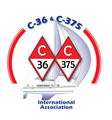My C36 is currently in Newburyport, MA. and I check it last weekend and found, although there was pink antifreeze in the bilge, water had infiltrated into the bilge (probably from the cockpit areas (no winter cover), and the pink water was frozen all around the bilge pump. So my question is: is the bilge pump dead? or do I find out after the ice melts. Anyone have frozen water in their bilge area or under the motor? This has been a tough winter in the northeast.
—
Bob & Maggie B. Hobby Time 1999 C36 MK II TM/Wing Hull #1796 Warwick, RI


My bilge pump has survived icing many times (as well as being over 15 years old). This winter was unusually cold, so we'll see what we find when we launch this spring.
Gary and Cathy Price
1997 C36 Mk II Tall Rig/Wing Keel Imagine...
Hull # 1617
Worton Creek, Md.
Northern Chesapeake Bay
In NY I had water in the bilge from traveling down the mast, even with a new canvas cover to protect all else. Often they manage to survive such treatment. Dont buy anything yet, use your dink hand pump until it thaws, and hope for the best.
The winter was rough, an uncovered boat on the dock froze its scuppers and sank. sounds like a Boat US story..
Gary Matthesen
"Holiday"
1987 #50646
Oyster Bay Long Island NY
Bob-
Welcome Newburyport neighbor!
We too had our Bilge freeze over. I poured a cup of rock salt on the ice and that enabled me to hand pump the bilge. The ice was about an inch thick. I then purchased a gallon of pink antifreeze rated for -50 and despite water draining from the mast, it has not diluted enough to refreeze. We do have a winter cover.
I have not reattached the bilge pump to the battery, but all appears normal after it thawed.
Maybe we'll see you out and about. We moor right off the Newburyport board walk directly behind the Firehouse. Last year was our 1st with the C36- a huge upgrade from our beloved 1986 C 30.
Paul & Wendy Keyser
"First Light"
Rye NH
2005 C36 MKII #2257
Wing, M35B
The antifreeze won't do much for the bilge, for the simple reason that it apparently is heavier than water and thus a mixture that accumulates in the bilge separates out.
I used to dump antifreeze in the bilge the first year or two that we had the boat, only to end up having to break up the crust of ice that formed on top. So, rather than simply throw money away on antifreeze (which just ends up raising the level of the water / ice accumulation), I've found the better thing to do is make sure to sponge out the bilge every few weeks. I disconnect the power from the bilge pumps, and swung them up out of the bottom to avoid ice damage.
Matthew Chachère
s/v ¡Que Chévere!
(Formerly 1985 C36 MKI #466 tall rig fin keel M25)
2006 Catalina Morgan 440 #30.
Homeported in eastern Long Island, NY